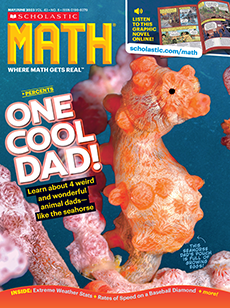BIPM/NIST
OLD: The International Prototype of the Kilogram used to define a kilogram.
To find out exactly how much a kilogram weighs, you need to go to the International Bureau of Weights and Measures in Paris, France. There, behind a triple-locked door, inside a vault, and under three glass jars, is the International Prototype of the Kilogram. This small metal cylinder is the literal definition of a kilogram.
“If you dropped it and a piece broke off, it would still be a kilogram,” says Stephan Schlamminger. He’s a metrologist who studies measurement at the National Institute of Standards and Technology in Maryland. “It’s the mass of everything around the world that would change.”
To accurately measure anything—mass, distance, time, etc.—you need a unit of measure. That’s a quantity that everyone agrees to use. For years, the units of measure we use were based on physical objects. But since 1948, scientists have been redefining them using universal constants, which are numbers that can be measured and used anywhere in the world.
To accurately measure anything—mass, distance, time, etc.—you need a unit of measure. That’s a quantity that everyone agrees to use. For years, the units of measure we use were based on physical objects. But since 1948, scientists have been redefining them using universal constants, which are numbers that can be measured and used anywhere in the world.
Exactly how much does a kilogram weigh? To find out, you need to go to the International Bureau of Weights and Measures. It’s located in Paris, France. You’d pass through a triple-locked door, open a vault, and lift three glass jars. Beneath them you’d find the International Prototype of the Kilogram. The mass of this small metal cylinder is the definition of a kilogram.
“If you dropped it and a piece broke off, it would still be a kilogram,” says Stephan Schlamminger. He’s an expert on measurement at the National Institute of Standards and Technology in Maryland. “It’s the mass of everything around the world that would change.”
People measure everything from mass to time to distance. To do that accurately, they need units of measure. A unit is a quantity that everyone agrees to use, like an inch or a second. For years, units of measure were based on physical objects. But in 1948, scientists started changing that. They began to use numbers called universal constants instead of objects. Universal constants are numbers that can be measured and used anywhere in the world.
